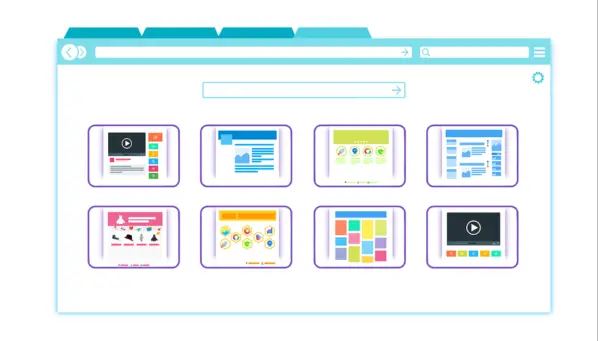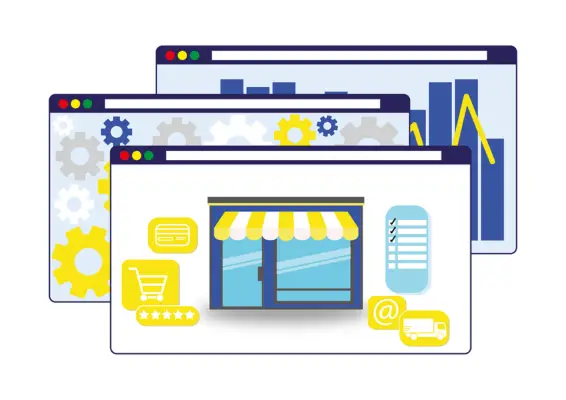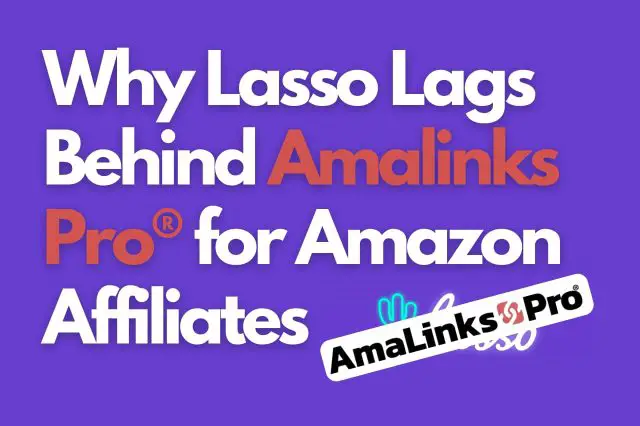If you’re looking for ideas on how to make money blogging, then this article is for you.
A blog can be an incredible asset, one that can earn you an income for your entire life. And there are SO many different ways you can use a blog to build multiple income streams, truly allowing you to become financially independent.
So, whether you’re a completely new blogger or are already earning an income from your site, read on for an absolute stack of ideas to help you make money blogging…
How Much Money Do Bloggers Make?
Before we jump into the 25 ways, it’s worth looking at the frequently asked question how much money do bloggers make? Well, those helpful folk over at moneymint.com have written an article that will actually make your eyes water…
- Tim Sykes at timothysykes.com makes $120 million per year teaching people about trading in stocks.
- Lindsay and Bjork at pinchofyum.com make $10.5 million per year sharing fun and healthy recipes.
- Abby Lawson at justagirlandherblog.com earns $4.8 million per year blogging about lifestyle and productivity.
While numbers like that showcase the exceptions rather than the rule, they are hugely aspirational and show what can be achieved when a blog is harnessed to its full potential. If those numbers sound too daunting, try these two examples:
- One of Spencer Haws’ sites – owntheyward.com – brought in revenue of around $50,000 in 2020. This site was started in September 2018 and at the end of 2020 had 621 pieces of content. That equates to roughly 22 articles per month for the first 2 years and 4 months.
- Shawna Newman details her annual income for the four case study sites she talks about over at skipblast.com If we look at the annual report for 2020, for Site #3, we can see that in 2020 it generated just over $30,000. 150 posts were added to the site in 2020 – roughly 12 per month. For the record, when Shawna was interviewed on the Niche Pursuit podcast back in October 2020, she had 17 active websites…
Whether we look at those mind-melting millionaires from the top list or the more attainable figures from the bottom, you can bet your bottom dollar on one thing. That all of those incredibly successful bloggers maximize the income from their blogs by implementing many different strategies and exploring lots of different income streams.
So grab yourself a coffee and let’s dig into this list of 25 legitimate ways you can really make money blogging…
1. Become an affiliate marketer
Affiliate marketing is one of the first ways many bloggers use to generate income from a blog. And there’s a good reason for this – it works.
Not only does affiliate marketing work, but it’s also easy to start. Novice and seasoned bloggers alike use the Amazon affiliate program as the backbone of their affiliate strategy, sometimes alongside other affiliate programs, to earn money from their blogs.
With dedication, life-changing money can be made from affiliate marketing. Here are a few examples.
- Matt Giovanisci at moneylab.co shares the 2021 numbers for his three sites here. The set of numbers I’ll highlight is from Swim University, a site started back in 2006 and dedicated to pool care. The total revenue for that site is truly colossal – just over $549,000…! $149,000 of that came from affiliate marketing.
- Carl Broadbent gives his site income report from January-September 2021 in this video. For the first 3/4 of the year, his total affiliate earnings for Website 01 are $4232.76. If we divide that by 9 and then multiply the answer by 12, we get a guesstimate of $5649 for the year. Carl is currently involved in 7 other affiliate sites with more planned going forward. If all of those bring in a similar amount of income from affiliate marketing, then that is an annual sum of $45,192.
The benefits of becoming an affiliate marketer are:
- it’s free to start.
- you can make money recommending products that you already use and love.
- the Amazon affiliate program allows you to make commissions on not just the product that you link a reader to, but any purchases made during the 24-hour cookie window
When thinking of affiliate marketing, it’s really important that you think outside the box. There’s much more to affiliate sites than blog post after blog post featuring product reviews and round-up articles – if those types of posts were all affiliate marketers ever wrote, most of us would get bored very quickly. Matt has written a great list of post types that can include affiliate links.
Maximize your Click-through Rate
One of the core strategies with affiliate marketing is to maximize the click-through rate (CTR). Simply put, doing this increases the likelihood of making more sales conversions. Much of this will depend on the landing page that your affiliate link goes to, but that’s where Amazon excels. Its landing pages convert. Period.
But you still need to do everything on your pages and posts to entice your readers to click through. That’s where AmaLinks Pro® can really help you to excel, too.
AmaLinks Pro® is a premium WordPress tool that helps you to maximize your Amazon affiliate earnings. Investing a little in your business really can pay huge dividends. Check out this short article for some real-life proof.
2. Monetize Your Blog With Advertising
 Along with affiliate marketing, one of the first strategies a lot of bloggers use to earn money is by adding display adverts to their site using an ad network. And it makes a lot of sense. Bloggers report that a significant percentage of their earnings comes from ad networks, meaning they’re a fantastic way to make money blogging.
Along with affiliate marketing, one of the first strategies a lot of bloggers use to earn money is by adding display adverts to their site using an ad network. And it makes a lot of sense. Bloggers report that a significant percentage of their earnings comes from ad networks, meaning they’re a fantastic way to make money blogging.
How does it work? A display advertising network (like Google AdSense for example) holds adverts for millions of clients and places relevant ads onto websites that fit the customer base of that client. Generally speaking, the website owner gets paid in one of two ways – per-click or per-view (sometimes both).
The ads can be placed as banner ads, in a sidebar and also in between paragraphs within the main content. The key thing to remember when implementing a display ads strategy on your blog is to show a maximum of 3-4 ads per post. Any more than this and the chances are they will become a barrier to the content and put readers off.
There are certain news websites I simply won’t visit anymore because of this very reason. Don’t alienate your audience.
The benefits to monetizing your blog with display advertising are:
- ad rates are going up with some bloggers reporting epmv (earnings per thousand views) rates of $40-$50. As a beginner, anywhere around $10 is considered good.
- display ads allow you to earn income from informational posts that you write. This is key, as the info posts are often what will pull in large numbers of traffic to your site and the earnings from display ads help to justify the time spent writing those informational posts.
- diversifying your income streams means that if your affiliate traffic is hit by something like a Google algorithm update, then your display ads can help to soften the blow until you can tweak your affiliate content to better conform.
There are often certain traffic criteria a website will need to meet before being accepted onto an ad network. The key to getting more traffic is to write optimized posts that rank in the search engines.
It takes time to build the huge numbers of traffic that some of the ad networks require, so most bloggers wanting to display ads on a new blog will use Google AdSense and then switch to one of the other ad networks as they attract more traffic.
- Google AdSense – no minimum traffic requirement.
- Ezoic – 10,000 monthly sessions.
- Mediavine – lots of bloggers love Mediavine. As of June 2020, you’ll need 50,000 monthly sessions to be eligible to apply.
- AdThrive – you’ll also need 50,000 monthly sessions to be considered for AdThrive, but also you’ll need to generate 100,000 page views.
Related Read: How to Get Traffic to Your Blog – 21 Powerful Ways
Example
Let’s take one of the affiliate examples we used above. In this video, Carl Broadbent shares the breakdown of his earnings from Jan-Sept 2021. If we take an even spacing of 3 months, the figures show:
January
Affiliate earnings = $306.98
Mediavine earnings = $873.95
Difference = +$566.97
May
Affiliate earnings = $866.39
Mediavine earnings = $1299.64
Difference = +$433.25
September
Affiliate earnings = $412.26
Mediavine earnings = $981.65
Difference = +$569.39
As those numbers show, display ads are a great way of making money and earning passive income from your blog content. If you’ve not already signed up to one of the ad networks on your blog, ask yourself this – do you want to leave that amount of extra income on the table?
3. Write Paid Reviews

Once you have good traffic, and a reputation to match, you could start to write paid reviews.
This can happen in one of two ways. A company will reach out to you to ask if you’d write a review of one of their products or services. Or, you can approach a company that you wish to review products/services for.
If that company can see that your blog is in their niche and that you have a large enough audience, then companies will see that it makes a lot of business sense to have its products reviewed by you to your audience.
Essentially, a company is leveraging the trust that you’ve built up with your readers by having you recommend its products to them.
Businesses may pay you in actual hard cash, but also often in the form of giving you the product or service for free in exchange for a review on your website.
The benefits to writing paid reviews are:
- you are potentially getting for free something that you would have previously spent your own money on to buy.
- you are getting paid by the company to do something you were previously doing for free.
- you can return the product and choose not to write the review if you don’t think it’s a good recommendation for your audience.
A word of caution here, though. Don’t let the quality of your content be compromised. If upon testing the product or service, you’re not happy with it, you need to stay honest and true to your audience, not to the brand that supplied you with the freebie. Impartiality is key to retaining that all-important trust – something that is so difficult to gain and yet oh-so-easy to lose. Don’t lose it.
Example
Brooke Saward does a fantastic job of this over at worldofwanderlust.com This blog has a huge readership as well as large followings on Instagram, Pinterest, Twitter and Facebook. As a result of this, Brooke is often invited by some super-luxurious (and eye-poppingly expensive!) hotels, spas and lodges to stay gratis.
She is open with her readers and always disclaims at the bottom of the article if she’s stayed, by invitation, for free. For example, in this post, where at the end this simple line offers complete honesty to her readers:
Thank you to AndBeyond for inviting me to experience Nxabega Okavango Tented Camp in Botswana. All opinions and photos are my own!
4. Ask for Donations

When you’ve given enough high quality, useful content consistently for years, your loyal audience will often look for ways to thank you. This is Gary Vaynerchuck’s Thank You Economy in action, and it’s one of the simplest ways you can make money online.
Sites like Patreon give your most appreciative followers the opportunity to both thank and support you for the content you create for them. As well as the feel-good factor your followers get from supporting you, it’s common for them to be given something exclusive in return. Access to a member’s group is a common perk, or even something as simple as giving your supporters access to content earlier than everyone else.
This method can work even when you have nothing but your stories to sell. Let’s say you’ve taken some time out of the rat race and are travelling by bicycle along the length of the Americas. Your blog is simply there as a place for you to tell the stories of your journey. But you just happen to be an incredible storyteller. And people cannot wait to read the tales of your latest adventure. Surely, they’d love to buy you a coffee? Just like a bard of old, you can be paid to tell your tales.
According to Influencer Marketing Hub:
…it’s safe to say that the Creator Economy boom has hit full stride in 2021 with an estimated $104.2B market size (as of May 2021).
I support several creators on Patreon and many people I know have told me they do the same. Being able to show gratitude and appreciation to those people for the content they provide me elicits a good feeling inside, and makes me feel like I’m a part of their journey, rather than an outside observer.
The benefits to asking for donations are:
- it’s a low-cost way to make money blogging.
- it gives a recurring monthly income.
- it’s easy to set up.
Example
So many bloggers are tuning into this blog monetization method. John Pavlovitz is a writer, pastor and activist, and his popular blog is read by thousands. He runs display ads on his site and sells products through his Etsy store, and in addition to those income streams, he also gives his readers the option to ‘Give’ via Patreon. At the time of writing, he has 955 Patrons – even if they all give the lowest amount of $1, that’s nearly $1000 per month.
5. Host A Business Directory

A business directory is a little like the Yellow Pages, only instead of listing every business type under the sun, when hosted on a blog the listings will be highly specific to that niche.
And, regardless of the niche you’re in, if your blog attracts a large number of readers then there are businesses who would be more than happy to advertise on your site.
Creating a business directory is a fantastic way for you to link your readers with businesses that they are highly likely to want to buy from. And those businesses will be willing to pay you to list their company on your site, knowing that the sales conversion prospects from your highly engaged traffic are likely to be very high.
With the average business directory listing coming in at around the $50 mark per month, you wouldn’t need to list many to see a decent return.
The benefits of hosting a business directory are:
- that once it is set up it’s an easy way to maintain an extra monthly income stream.
- it can provide a steady source of income, one that isn’t affected by any potential seasonality within your niche.
There are several good WordPress plugins that can help you to build a business directory on your site.
Example
Maybe you run a travel blog, focusing on one particular country. Let’s say Iceland. You write lots of posts advising visitors on where to go and when to go, with lots of tips and advice to give travelers the best time possible while they’re there.
And while they are there in Iceland, what are they going to need? Well, obviously a place to stay and places to eat. And maybe car-hire, too If you have enough traffic, then hotels, bed-and-breakfasts and self-catering accommodations, as well as restaurants and car-hire companies, are going to know that visitors to your blog are a great source of highly-primed potential business.
6. Add A Job Board

If you have a decent amount of traffic coming in and your site is known within your niche as the go-to place for information, then adding a job board can be a great way to make more money from your blog!
Employers want to attract those with a passion for the industry. And the chances are your readers are highly passionate about the niche you’re in. So it’s a perfect match.
Candidates are already very likely to be knowledgeable and motivated – a great combination for employers!
The benefits of adding a job board are:
- if your site becomes a popular place for job searchers in your niche, then you’ll receive an increased traffic bump.
- it’s reasonably easy to maintain once it’s set up.
There are different ways to earn money from a jobs board. The simplest is per listing, where a company will pay a fixed fee to advertise its vacancy on your board for 30 days.
However, if a company is large and will have lots of jobs it would want to advertise via your site, then a discounted annual package deal is going to be a more attractive offer to the company – as well as a juicy lump sum for you.
Example
ProBlogger.com has one of the biggest job boards in the blogging niche, and recruiters currently pay at least $75AUS ($54USD) per listing. There are 71 listings at the time of writing – $5325AUS ($3840USD).
Even if your job board had 20 listings per month, at that rate you could earn more than $1000 each month for very little additional work. You already did the hardest part by getting the traffic numbers up!
7. Create An Online Marketplace

Much like a job board, creating an online marketplace can be another great way to make money online. Think Amazon, Etsy and eBay, only not so broad in scope! Trying to run an online marketplace to compete with these Goliath’s is almost certainly going to flop –the way to succeed is to specifically sell products within your niche.
An online marketplace is not to be confused with an online store. The difference between the two is that if you run an online store, then you’ll be selling products that you physically stock somewhere. The responsibility of storing, packing and shipping those products is yours.
Whereas with an online marketplace, your responsibility is the marketing and selling – the storing, packing and shipping is handled by the vendor.
You host the marketplace on your website, without actually stocking any of the products. Vendors choose to sell their products via your marketplace (this is why it’s better to set one up once you have good traffic numbers), and you take a percentage of the sale.
As well as generating more revenue for you, an online marketplace can also bring in fresh traffic to your site as people in your niche learn that your marketplace is the place to go to buy the specialized items they need.
The benefits of creating an online marketplace are:
- there are relatively low overhead costs.
- the inventory, packing and shipping are all taken care of by the vendors, rather than you.
Example
Maybe you run a blog about tree surgery, advising people on how best to prune, cut back and generally look after their trees. Hosting a marketplace on your blog to sell equipment could be a great way of branching out…
Your readers will most likely be interested in buying chain saws, loppers, gloves, goggles, helmets, chippers etc. Having an online marketplace on your blog where all of these products are displayed in an online storefront can help your audience to find the products they’re looking for.
You’ll probably have blog posts written reviewing and comparing many (if not all) of the products in the online marketplace, but the benefit to your readers is that the products are easily found in one place.
8. Offer Coaching Services

Since the world got more used to communicating online, those who can offer coaching services will have found their reach extended. Gone are the days when a coach could only do their job locally or within economical distances of home, meaning one-to-one coaching can happen anywhere, at any time.
And while it may not seem so at first glance, blogging and coaching go hand-in-hand, and coaches can make money blogging in several different ways.
The journey could look a little like this, with an online coach providing:
- free, useful content from blog posts
- valuable gated content
- highly valuable premium content (like a video course)
- exclusive one-on-one coaching
The benefits of offering Online coaching services are:
- as an online coach, your scope is global.
- one-on-one coaching can be just one of the many revenue streams that your monetized blog can provide.
Example
Let’s say you’re a public speaking coach. You have a blog as well as a YouTube channel and a Podcast that prove you can do the very thing that you coach. Those three platforms allow you to connect with your audience in whichever way they prefer to consume your content.
But the thing with public speaking is that if it’s something that truly terrifies you, then the chances are you’re going to need to speak to someone to finally banish those fears before you’re on centre-stage at that big presentation on Monday morning… And who better than the lady that has been coaching you via her blog posts, YouTube videos and podcasts? Her content has built up trust between you and she offers that one-to-one service that you need. She is the coaching solution to your problem.
9. Offer Consulting Services

Whereas coaching leans more towards helping individuals, consulting services can be offered to groups and businesses.
Your blog is essentially a growing portfolio, one that naturally promotes your knowledge and skills in whatever niche you serve. And by offering consulting services to help other businesses, you can make significant extra income.
From the expertise your blog has proven in your niche, maybe an online community wants to hire you to speak in their paid webinar? Or maybe a local university knows that what you have to say is what its students want to hear.
The benefits of offering consulting services are:
- very lucrative financially
- depending on the niche, you can get recurring consulting gigs within the same organizations
Example
Maybe you’re a graphic designer, specializing in the realm of augmented reality. Your blog will showcase your skills, offer tutorials, alongside tricks, tips and tools. But you could also hire yourself out as a consultant.
A business that wants to explore augmented reality for its marketing purposes could hire you to visit the company as a consultant to advise on best practices, implementation etc. You could also give group training sessions to the graphic designers within that company.
As augmented reality continues to grow as a technology, your expertise could be required to return to that business to show what new advances have been made and how that can help that particular business to develop and grow.
10. Freelance Services

The chances are that if you run your own blog, you have at least one skill set that you could use to offer freelance services to other bloggers and small businesses. How many businesses, large, small (and everything in between), have a blog page on their website? Many of them.
If you’re writing content for your own blog, you can write for somebody else’s. Much like the coaching and consulting examples above, your blog effectively becomes a portfolio piece for your skills.
The benefits of offering freelance services are:
- no additional upfront costs to promoting your skills – your blog naturally proves to others that you can provide the service you’re offering.
- you can reinvest the money you make back into your blog to grow
- you can spend time doing the aspects you really enjoy while outsourcing the parts you don’t
Example
Perhaps you’re a wiz at keyword research and absolutely love to geek out finding the low-hanging search phrase fruit? Bloggers who need batches of keyword research doing but don’t have the capacity to do it themselves will outsource that element of their business. You could do it for them.
The chances are you already have access to a paid keyword research tool. Offering your skills as a freelancer would not just off-set the cost of that tool, it would in all likelihood make you a good chunk of cash on the side, too. Cash that you could use to invest in more content, allowing you to increase traffic and earnings from your blog. Your blogging snowball gains both size and pace…
Whatever your skill, dedicate a page to it on your website and promote your freelance service – it’s a fantastic additional way to make money from your blog.
11. Write Sponsored Blog Posts

A sponsored blog post is where a company will pay the website owner to feature its product or service natively to that website’s audience.
You’ll need to make sure it’s obvious to your readers that it’s a sponsored post, but the tone and style should match your usual posts so that a sponsored post isn’t jarring for your audience.
Sponsored posts are different from paid reviews in that they tend to feature the product(s) being used contextually. This type of content feels much more natural and is potentially more likely to resonate well with your readers.
You still need to be careful how you do it, but, when done right, sponsored posts are definitely a good way to make money blogging.
The benefits of writing sponsored posts are:
- you get paid to create something that you would create anyway.
- you’ll gain valuable external backlinks from any sources the sponsoring company link to your article from.
- sponsored posts can enhance the credibility of your own brand through the association with a respected company from your niche.
There are generally three ways to go about attracting brand partnerships for sponsored posts:
- Blogger networks
- Pitch a company directly
- A company reaches out to you
Example
Let’s say you run a successful food blog, packed full of tips, techniques and recipes that attract an active readership of 50,000+ unique views. And let’s also say that you use a Breville food processor for many of your culinary creations.
You could approach Breville and say that you’re doing an in-depth post on how to make a full 5-course menu for a special Thanksgiving meal. Maybe you’re hiring a professional photographer to come in for this one, to capture classy shots as you prep, cook and serve. And you think it could be a good opportunity to create a sponsored post…
You could suggest to Breville that the food processor be featured via product placement within the shots, as well as mentions within the recipe. A sponsored contextual post like this feels natural, helping to keep the trust between you and your audience while making money for both you and the sponsoring brand.
12. Sponsored Social Content

If you have a large following on a social media platform like Instagram or TikTok, you can utilize this to connect with brands and post social sponsored content to your audience.
As with other forms of sponsored content mentioned in this list, the key to a successful (rather than damaging!) promotion is to keep it as natural as possible. Tie-ins like this should only be with brands that you personally rate, and that you know your audience will love.
You should charge the brand for each sponsored post you promote to your followers – depending on how many followers you have this can be a big amount on its own.
The benefits of sponsored social content are:
- that they are an excellent way to pull in lots of new blog traffic from the pool of followers of the sponsored brand, helping you to build your blogging business.
- aligning your business with respected companies in the same niche can help to strengthen your personal brand.
13. Site Sponsorship

Site sponsorship can come in many forms, from simply displaying a list of businesses and logos that contribute money to help you create your content, to a specific ad set or homepage takeover by a particular business.
The Online Advertising Guide sums it up nicely:
In online advertising, a sponsorship is where an advertiser pays to have both ads and content on a site. This content could include logos, articles, videos, or anything.
Maybe there’s a particular brand that your site really resonates with and that you see your readers gravitate towards, too. That brand may be interested in sponsoring pages or sections of your site.
The benefits of site sponsorship are:
- that it’s a great form of digital marketing – associating your blog with a quality brand that resonates with your audience can boost your reputation with your own readers.
- site sponsorship can help you to build lasting relationships with brands that closely align with your blog and its readership.
Let’s say you run a blog in the backpacks niche. You have realized that whenever you promote any product made by Millican, your affiliate sales perform consistently higher than for any other brand. There’s just something about Millican that resonates with your audience.
And let’s imagine you’re planning a series of articles to be released over a 10-day period focussing on sustainable backpacks from ethical companies. You could approach Millican with your affiliate stats for their products and your traffic numbers and pitch a 10-day sponsorship deal with them.
14. Host Sponsored Contests or Giveaways

Sponsored contests and giveaways are fantastic opportunities to boost brand awareness and spike audience interest.
Amongst your own followers sponsored contests really can generate an extra bubble of buzz and excitement, while at the same time pulling in a host of new traffic from the contest provider as they promote it via their own channels.
Choose carefully which brands you want to work with when hosting sponsored giveaways – for these types of promotions to work well they need to feel natural to your audience rather than salesy.
The benefits of hosting sponsored contests or Giveaways are:
- they can help to forge great relationships with brands in your niche
- they are an excellent way to pull in new readers from the wider niche, as your brand taps into the followers of the sponsored brands
Example
Perhaps you’re a blogger in the alcohol-free drinks niche. You’ve been busy producing content around the best non-alcoholic beers, wines and spirits that you’ve tried, giving your honest opinion on what they taste like.
One of the brands you particularly love and recommend has just launched a new alcohol-free IPA – you’ve tried it, you love it, you’ve written a review of it. The brand has reached out to you and wants to run a promotion on your website for 10 of your lucky readers to win a case of the new beer to try it for themselves – and to share it with their mates.
The brand would push your site (and review) to their followers to promote the contest (and the new beer), and you’d get a spike in traffic as well as some new followers to your blog from that source. And your readers get the chance to win a free pack of beer. Everyone is a winner!
15. Gated Content

Gated content can also be referred to as restricted members-only content. And it can be split into two types.
Regular gated content tends to be free in a monetary sense, but the reader will need to give their email address in order to access it. Whereas premium gated content will actually cost the reader money to access.
It’s a really good way to gain something in return from your most valuable, and most useful content. It should be content that has taken you a long time and a lot of resources to create.
Examples of premium gated content include:
- ebooks (or other digital products)
- templates
- checklists
- tutorials
- newsletters
If you’re going to ask for payment for some of the content, then it’s relatively easy to set up a paywall on your site, with the paid-for content gated behind that.
The benefits of gated content are:
- it’s a fantastic way to capture email addresses to build that vital email list.
- it provides a way for you to earn something from your most valuable and useful content.
Example
Maybe your blog is in the finance sector and you’ve designed some highly advanced spreadsheets in Excel that will really help your readers to, well, excel in whatever it is they’re trying to do.
Gating this type of high-value content behind a paywall would make a lot of sense and as long as the content delivers on what it says it will, then your readers will be happy to pay for the benefits they get in return
16. Create a Private Community or Forum

Private communities can work exceptionally well within certain niches. The opportunity for your readers to interact with others from your community to share thoughts, experiences, wins and losses is a huge pull for a lot of people.
Private communities often come in the form of an invite-only Facebook group or self-hosted WordPress forum. I’m a member of a few that I’ve gained access to from signing up for a paid course. And the interaction and encouragement that can be gained from being a part of these groups is often a feature that many people tote as being one of the top benefits for them.
The key to hosting a successful private community is to give members access to your expert advice. In short, you (or expert members of your team) will need to spend some time there answering people’s questions and providing value to justify the charge.
The benefits of creating a private community are:
- that they provide a really great way for your community to directly interact with you and with each other.
- the questions you see on there can help to inform future blog content posts for your main site – if a certain question keeps being asked within the group, then that’s a good indicator to dedicate a post to that question.
17. Feature a Resource Page

This is one of the best examples in this list of an easy win. A resource page is a one-stop place for your readers to visit to see all of the tools and equipment you use to do what you do.
You may well cover off all of those items within various blog posts, but the reader then has to search for each item separately. Also, there may well be things that you use that your readers have never heard of – they’re not going to search for those if they don’t even know they exist, right?
Listing them all on a page that can be clicked to from the main menu on your homepage is a simple solution to help your readers find those product recommendations fast.
The benefits of featuring a resources page are:
- it provides a one-click route for your readers to see at a glance all of your product recommendations.
- it can highlight products that your readers may know nothing about.
Example
George Vlad is a natural soundscape recordist, heading out into the wilds on expeditions to record the sounds of nature from the jungles of Borneo to the deserts of Namibia.
On his website, he has a ‘Gear‘ page that lists all of the equipment he uses. He includes a picture of the item and a brief description followed by a link out to the individual product review. This makes it super-easy for anyone to see at a glance all of the items George uses, and to then hone in on those that are most relevant for them.
18. Write an eBook

Writing and selling an eBook has become a much simpler process than it used to be. And if you have a lot of content on your site that can take a long time for a reader to sift through to find the exact things they’re looking for, then writing an eBook makes a lot of sense.
If you’ve been blogging for a while and have built up an audience for yourself, then the chances are you’ll have a lot of content on your site. Writing an eBook allows you to pull that content into one place, structure it into a linear fashion and then sell it to your readers.
Yes, they can find all of the information on your blog if they spend a lot of time searching for it and filtering through for the parts they need. But by putting it into an eBook form, you’re helping to save them time – something that people (me included) are more than willing to pay for.
When planning your blog posts, think how each one could be a chapter (or part of a chapter) of an eBook. Then when the time comes to stitch all of those posts together in a cohesive way, you should only need to write an intro chapter and a conclusion (plus a few legal bits), and apply a little editorial magic for your eBook to be pretty much done.
The benefits of writing an eBook are:
- that much of the content is already written in blog post form, meaning writing the eBook is more of an editorial job, with an added intro and conclusion.
- that having your content streamlined into an eBook can enhance your brand reputation with your readers.
- eBooks are digital products meaning no printing costs, storage or shipping.
Example
Maybe you run a blog all about indoor plants. You have hundreds of blog posts talking about the best types of plants for different light and temperature conditions, how-to guides on re-potting, feeding, pruning and propagation etc.
Your readers love your content with each post attracting thousands of views. But imagine how many clicks and searches it will take for your readers to find all of the content they’re looking for? And how overwhelming it could feel for someone new to the hobby and new to your blog?
An eBook helps both loyal readers and newcomers alike to get answers to all of their questions in one easily downloadable – and easily readable – format.
19. Website Flipping

Build a site, sell the site – that’s website flipping in a nutshell. With the proceeds you could start all over and build another site – it’s a great way to prevent burn-out within a niche.
Roughly speaking, the selling price of a website is 32x its monthly income. If you earn $1000 per month from your blog, then, providing it is set up well, you can be looking to sell for around $32,000.
This concept works well if you have a portfolio of sites so that you maintain a good income even after selling one. Once you’ve got the cash in your back pocket, you can start a new site, outsourcing a lot of the work to get it up and running fast.
The benefits of website flipping are:
- it’s a huge opportunity to make some serious cash.
- can prevent burn-out within a particular niche – if you feel you’re getting bored with a particular site, sell it on.
As a side note, if you do plan to sell your site later on, it’s worth leaving a little bit of potential for the future buyer to expand into, allowing them to develop and grow the site.
Also, to maximize your sale price, make sure you sell with your earnings on an upward trajectory.
20. Sell Templates and Swipe Files

If you’re successful in your niche, then selling templates and swipe files can be a great way to make money blogging. Why? Because they save your readers that most valuable of commodities – time…
Time is the one thing we’re all limited by, to varying degrees. If you’re a blogger, then chances are you have a day job and your blog is a side hustle. In which case, finding ways to maximize the performance of your time is critical.
Research takes time. And experience, condensed down into an intuitive template or a carefully curated swipe file, is like digital gold.
If you have a set of templates or swipe files that can both save your audience time and deliver them the results they’re looking for, then those resources are likely to sell like hotcakes.
The benefits of selling templates and swipe files are:
- you’re effectively being paid for providing an asset you’ve already built for yourself.
- your templates and swipe are tried and tested by you, so you know they will provide real value to your readers.
- as they are digital products, there are no storage or shipping considerations.
21. Host Webinars

If you’re comfortable speaking live in front of a digital audience, then hosting a webinar can be a fantastic way to deeply connect with your readers.
And, as people have become even more used to communicating and learning via digital platforms, webinars are another way you can offer value in your niche.
The webinar itself can be a free event, but you can use it to promote an offer at the end. If your webinar gave enough value and you pitch the offer in the right way, then you stand a great chance of monetizing your blog in this way.
Be sure to record the webinar so the video can be embedded somewhere for those who couldn’t make the live showing.
More people are likely to view the recording than the live session, so although they won’t get to ask live questions or interact with the other attendees, they can get the benefit of the content as well as the promoted offer.
The benefits of hosting webinars are:
- webinars provide a great way for your audience to connect with you (and each other) and get answers to their questions in real-time
- you can invite guest speakers and leverage their audience.
- webinars offer a global scope.
22. Use Your Blog To Teach An Online Course

The online learning industry is booming. And if you have highly valuable and useful content that could be communicated well through the medium of online courses, then you have a fantastic opportunity to make money blogging.
Bricks and mortar classrooms and teaching spaces all have one thing in common – limited space, and therefore limited numbers. Online courses have none of these fetters – create your course once and sell it to as many people as possible.
If you have lots of blog content already written that could be turned into lessons to make up an online course, then a good chunk of the work is already done. The additional work would come from creating any supporting materials such as checklists, worksheets and templates.
Once you’ve got the content ready, you can choose to either sell the course directly through your website or via an online course provider.
The benefits of using your blog to teach an online course are:
- an online course pulls a lot of your blog posts together into a useful teachable format that makes it easier for your readers to consume in a logical order.
- it’s a great way to monetize content that you’ve already written.
- like eBooks, online courses are digital products – so they can be available worldwide without ever having to be physically stored and shipped.
Example
You have a motion graphics blog focussing on creating animated intros for YouTubers. You’ll most likely have a YouTube channel that shows in video form how to do certain things. And your blog compliments the video content through written step-by-step tutorials allowing for deep diving on technique and showing creative examples.
Your online courses could pull these elements together, with each module utilizing the content from both platforms, weaving them together in a linear way to create a fantastic set of courses that your audience would find highly useful.
23. Sell Physical Products via Dropshipping

Dropshipping is a little like the online marketplace model mentioned above. The difference is that with dropshipping, rather than a vendor choosing to sell via your store, you pick the products you think you can sell.
The route looks like this – build an online store, choose the products you want to sell and then market them to your audience. You sell at one price but buy at another.
For example, a customer places an order for a $100 product that you list on your online store. You then forward the order to the supplier, and pay the wholesale price of $75, thus pocketing $25 for yourself in the process.
The supplier will handle the shipping of the product out to the customer, whereas you handle the selling and the customer service.
Choosing the right products and finding the right supplier are key to making a dropshipping business successful.
The benefits of dropshipping are:
- that you don’t need to physically stock an inventory
- low upfront costs to start a dropshipping business.
- easy to grow and expand.
24. Make Your Own Online Store

With your own online store, you stock and ship your own inventory. This could be an inventory that you’ve bought yourself from a cheap wholesale supplier or an inventory of your own products that you’ve created yourself. Or even a mixture of the two.
There are a number of WordPress plugins that make it relatively easy to add an online store to a site, so if you don’t mind getting involved with the storage and shipping aspects of this business model, hosting your own online store can be a good way to make money blogging.
The benefits of making your own online store are:
- that it can cut out any reliance on third-party suppliers.
- you get to keep the profits from your own products that you’ve made yourself.
Example
Maybe you’re a ceramicist, making bespoke sculptures, vases, bowls and other tableware. Hosting your own online store allows you to showcase your creations and sell them straight to your customers directly from your own website.
Maybe also you have a good relationship with a wholesale supplier of ceramicist tools – things like modelling tools, strip tools, kidneys and throwing sticks.
You know your readers will be buying these kinds of physical products anyway, so why not stock these small items yourself and sell and ship them to your own audience?
25. Give Real-World Talks

If you’ve been blogging for a while, enjoy public speaking and have become a real authority figure in your niche, then giving real-world talks could be a great way to bolster your blogging income.
Many niches are popular enough to attract large numbers of people to live events and seminars. And if you can get a speaking gig at one in your industry, then it’s a fantastic way to offer real value to a gathering of people who are really interested in your niche.
Despite the digital age we live in, relationships forged from meeting people in real life still form the backbone of most industries.
Whether you get paid a speaking fee by the event organizers, or whether you speak for free as a marketing tactic for your brand, the personal touch is still a powerful way to connect with your readers and the wider community from your niche.
The benefits of giving real-world talks are:
- that they provide a very natural way for you to build relationships within your industry in a very personal way
- that they are a great way to advertise your brand in a very personal way to a lot of highly engaged people
FAQs about making money blogging
What is a blogger?
Bloggers are people who write blogs, which are usually published on the internet. Bloggers use the blog to express their opinions and share their thoughts with their readers.
Bloggers can be journalists, business people, celebrities or anyone who has a story to tell. They usually blog about their day-to-day life, thoughts and opinions on a particular topic or niche.
Related Post: What is a Blogger [and what does a professional blogger do]?
How to make money blogging?
When thinking about how to make money blogging, think about the specific path or funnel that your blog readers take when finding your blog. Which of the items in the 25 above are most suitable to your niche and to the people that make up your audience?
Many of the ideas listed above only work well with larger numbers of traffic. So first-up, concentrate on that. Write great content focussing on topics that are useful to the people in your niche. What questions and issues do they have that you can help them to solve?
Keep doing that well – and consistently – until you have a wealth of useful content on your website. If you’ve done proper keyword research and optimized each post in terms of on-page SEO, then in time, your traffic will grow. And this is the path to a profitable blog.
How do bloggers make money?
Bloggers make money by using a blend of the strategies listed above. Most start with affiliate marketing or display ads, or both. They’ll then move on to some of the other strategies to increase the number of income streams.
On the face of it, it might seem crazy to think that a blogger can make money when they’re competing against colossal companies and trying to rank content on the first page of Google.
But, as crazy as it is, bloggers can often out-manoeuvre those large competitors. A great example is the beauty and style website, Byrdie, which outranks all of the massive beauty companies for huge traffic volume searches such as ‘moisturizers’, ‘styling for short hair’ and ‘extension eyelashes’ – to name but a few!
Byrdie is an incredible example of how highly committed content creators can take those coveted top SERP spots on Google and really make money blogging.
What are the best blogs about making money online?
If you’re committed to making money online using a blog, then there are plenty of excellent places to go for some real expert help and guidance – often for free.
Here is a list of my go-to places for real, practical help and advice:
- Authority Hacker – Blog | YouTube | Podcast
- Niche Pursuits – Podcast
- Matt Diggity – Blog | YouTube
- AmaLinks Pro® – Blog
- Miles Beckler – Blog | YouTube
- Steve Toth – Blog
Can you still make money blogging?
The good news is that you definitely can still make money blogging. The world is a vast place with a mind-boggling number of people on it. And more and more of those people are using the internet. Plenty of new bloggers are finding ways to make money blogging – and there’s no reason you can’t, too.
The rules of play stay the same. Show up, create the best content and be useful to the people in your niche. Keep doing it long enough to get traction – that’s the hard part. If you can do those things you will make money blogging.
To give yourself a head start, you could consider buying an aged domain that you can then build your website upon. If that idea appeals, here are a couple of sites to check out:
How to make money fast blogging?
It’s very difficult to do this. The regular path for most of us to make money blogging is not a fast one. As a rule of thumb, it will take 2500 hours of time before you start to see significant results. Depending on how many hours per week you can dedicate to it, it could take several years. Some bloggers manage to do it much faster though – within a few months. But these instances are rare.
The only realistic way to make money fast from blogging is to buy an existing affiliate website. There are plenty for sale – but they’re going to cost you – which is why website flipping is included in the main list above!
Below are a few places to browse, but a word of warning first. If you’ve never built an affiliate site and don’t understand how they work or how to keep them generating cash (and what to do if they stop working!), then buying a site is a huge and expensive risk.
Make Money Blogging – The Takeaway
If you are putting all of your efforts into building a successful blog and attracting readers, why not maximize the value of your site by adding more income streams?
Making money blogging isn’t a complicated thing. Selling physical products, digital products and generating affiliate income are all relatively simple concepts to making money online – even if you have a new blog.
There are some really easy wins in the list above. Even if you just picked 5 of them and each of those 5 made you an extra $30 a month, that’s still an extra $1800 over the course of a year!
Successful blogs will use a mix of the tactics above, but when starting out on their blogging journey, most bloggers will most likely begin with the top two from our list.
For a beginner blogger, affiliate marketing and ad networks really are great ways to make money online. If you can write high quality and useful posts for your target audience, then you are on the right path to success.
Ensure that those posts are structured well for search engine optimization and even a new blog can start to attract significant numbers of website visitors.
And once you have blog traffic, your affiliate earnings and your ad revenue will begin to increase naturally – which is when your hard work really starts to pay off and your blog will start to bring in passive income.
For affiliates, Amazon Associates is still the easiest platform to get started on, and done well can help anyone to make some real money blogging.
For advice, ideas and guidance on how to maximize your affiliate earnings from Amazon, check out the AmaLinks Pro® blog and sign up for our free Level Up masterclass.







